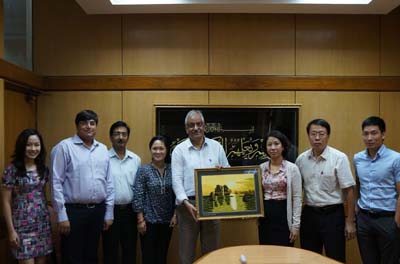Promoting Pro-Poor Innovation in Vietnam

Key Contact
Nancy Chen
Start Date
End Date
Funding Amount
$ 36,888
Knowledge-providing Countries
Knowledge-receiving Countries
Summary
To help to reduce poverty, the Government of Vietnam prioritized “inclusive innovation,” which involves developing programs to identify national development challenges (NDCs), and stimulating low-cost yet high quality technological solutions and products benefiting the poor. In 2010, the Government began to prepare the World Bank Vietnam Inclusive Innovation Project (VIIP), which was to launch and finance such a program. However, Vietnam’s National Foundation for Science and Technology (NAFOSTED), one of the key implementing agencies of the project, lacked the skills and know-how to develop and manage it. Complementing other Bank support, the Bank arranged for NAFOSTED to visit India to learn about inclusive innovation from its Council of Scientific and Industrial Research (CSIR), which had led such programs in India, and the Global Research Alliance (GRA).
Three senior staff from NAFOSTED visited India for five days in September 2011 to take part in workshops with the CSIR and GRA. Participants increased their awareness and knowledge of tools for identifying NDCs, platforms for crowdsourcing solutions, strategies for communicating with stakeholders, and good practices. Delegates learned how to leverage partnerships by visiting a private company with experience exporting inclusive innovation products and a research university. After the study tour, the CSIR continued to advise NAFOSTED through audio-conferences and expert visits to Hanoi, which helped to develop a framework outlining NAFOSTED’s next steps.
The exchange provided just-in-time support to help NAFOSTED develop a program in the context of the VIIP, which was approved in May 2013. The exchange was particularly valuable in moving from a broad awareness of inclusive innovation to understanding the intricacies of managing and operating a program. Testifying to this shift, delegates developed a grant manual delineating the fine points of program operations, such as procedures for calling for proposals, criteria for selecting and monitoring grants, scopes of funding, and reporting requirements.
As expressed by Do Phuong Lan, the Deputy Director of NAFOSTED: “[T]he study tour was helpful and fruitful, and improved the skills of NAFOSTED staff to manage an inclusive innovation program under the Vietnam Inclusive Innovation Project, particularly by sharing knowledge in project and grant management and research and development.”
Beneficiaries / Participants
To accelerate poverty reduction, the Vietnamese government is supporting “inclusive innovation,” which involves identifying National Development Challenges (NDCs) and directing public funding to develop products and technological solutions—mostly of low cost—benefitting the poor. The Government has worked with the World Bank to promote innovation, and in 2011 began to prepare a Bank lending project to support the development, adaption, scale-up, and commercialization of inclusive innovation technologies. Under this Vietnam Inclusive Innovation Project (VIIP), the National Foundation for Science and Technology (NAFOSTED) was expected to assume a lead role in coordinating NDCs and selecting, funding, and monitoring grants. However, staff from NAFOSTED was not equipped with the know-how and skills to develop and manage such a program.
In response, the Bank facilitated a learning partnership between NAFOSTED and the Global Research Alliance (GRA)—an international network of science and technology organizations—and India’s Council of Scientific and Industrial Research (CSIR), which is a member of the GRA and had successfully implemented inclusive innovation projects. The Bank first organized a study tour to India to visit the CSIR in June 2010, and a regional workshop in Vietnam in May 2011 to learn about good practices, success factors, and examples of inclusive innovation. Though these activities provided a good foundation, NAFOSTED staff sought more granular knowledge on how to establish and operate such programs. With support from the South-South Facility, staff from NAFOSTED engaged in a second study tour to India to learn about the steps, tools, and mechanisms for developing, managing, and operating these programs.
Moving forward
The grant and project operations manual developed with support of the exchange helped to facilitate the smooth implementation of the VIIP. In addition, NAFOSTED began to reach out to innovators and Research and Development Institutes to promote the program; many started preparing grant proposals.

 China
China Colombia
Colombia Denmark
Denmark India
India Indonesia
Indonesia Mexico
Mexico Russian Federation
Russian Federation Spain
Spain United Kingdom
United Kingdom